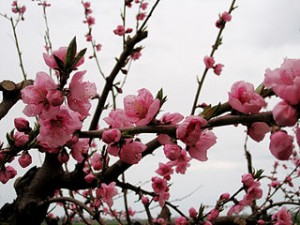According to a recent news story in CBS News, a new study published in Environmental Research Letters projects that the onset of spring plant growth will shift up by an average of three weeks by the year 2100 due to climate change trends. The trend to warmer temperatures are expected to shift the dates of first and last frost, making the growing season longer.
In my own research using a study of the warmest years in the past climate record, Melissa Griffin of Florida State and I estimated that a 1 °F increase in annual average temperature would increase the growing season by about a week to ten days depending on the location, and a few areas in Florida that get frost now would not get frost in the future.
Farmers in the Southeast would have a variety of ways to adapt to those changes, including planting different varieties or different crops, changing rotation patterns, and moving to double or even triple cropping in the future. The big questions are how fast the temperature change will occur and how the precipitation will change.
Over the last 100 years there are no strong trends in annual precipitation in much of the Southeast, although if you look by season, fall is getting wetter and the other three seasons are getting drier. This could cause an increase in drought during the growing season due to warmer temperatures coupled with higher evaporation rates but no increase in rainfall. In fact, while the annual total rainfall shows no trend, the rainfall patterns do show a trend to higher intensity rainfall (more than 2 inches in a day), which means that there would likely be longer dry spells between rain events. That would add stress to plants, especially those in soils with poor water-holding capacity.
